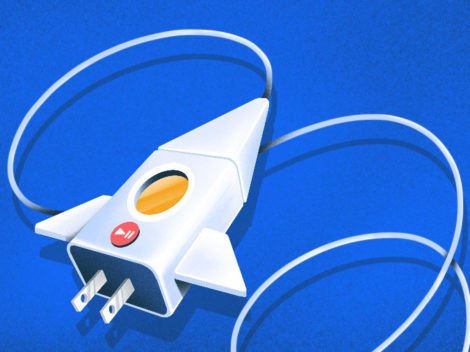Morning Markets: A smaller scooter company is raising capital as it claims better economics. How bad was early scooter math?
This morning Axios reported that Skip, a San Francisco-based scooter company, added more capita to its Series A with “an undisclosed amount of new funding from Toyota AI Ventures.”
Subscribe to the Crunchbase Daily
Skip’s Series A, a $25 million round led by Accel was announced in June of 2018. The startup added $100 million in debt in December of 2018, boosting its war chest as it competed with Lime and Bird, two leading domestic scooter startups with far greater capital bases.
Now with new funds, Skip is touting a new scooter design that Axios reports is easier to take apart. The design could help the company secure better unit economics for its scooter fleet. And thus, perhaps, prove that scooters are an economically viable business. That scooter companies have been prodigious fundraisers is fact; that they have yet to find the balance set of revenue and cost of revenue to generate enough gross margin to show that the model can fund companies with Silicon Valley cost structures is not yet clear.
Both Bird and Lime, the domestic Uber and Lyft of scootering, have introduced new hardware models in the last year. But what’s fascinating in all of the discussions of new scooter designs is how much money was raised and spent by companies in the category before they did the hard engineering work to give their new devices a shot at profitability.
For example, Lime introduced its third-generation new scooter in October of 2018, with Wired noting that the new hardware “is built to last up to or even over a year [while] earlier versions generally conked out at six months.” Bird dropped its new scooter in October of last year as well, with CNet reporting that the design was “more rugged and long lasting than its predecessors.”
However, Lime had already raised $120 million in a two-part Series B and added $335 million more in July of 2018. Presumably, some of that later round (the startup also raised a $310 million Series D this year) went into developing the new scooter, but a chunk of its earlier money certainly went into buying and deploying scooters that weren’t as economically sensible. That’s a lot of equity capital that went through the firms and onto the market while not generating economically-favorable results.
Bird’s fundraising is a bit more opaque, but the company did put together a $15 million Series A in October 2017, and a $100 million Series B in March 2018 before it closed its final known round (a $158 million Series C) which also came before its new scooter.
Backing up our idea that Bird and Lime spent money on scooters that didn’t have a shot at making their money back while helping fund the business is backed up by Bird’s $100 million writedown from earlier this year that the company’s CEO confirmed on Twitter. The hardware hadn’t lasted as long as expected.
Skip’s comparatively small raises to-date, even with the extension of its Series A, imply that it has spent far less on scooters that weren’t great in terms of financial return. It would be pretty ironic, in Silicon Valley-terms, if the company that raised the least became the most viable in terms of economics. Not scale, mind. Bird and Lime are far larger I’d reckon given what we know about their relative market penetration. But as we recently learned with The We Company, scale doesn’t always equal success.
Illustration: Dom Guzman.

Stay up to date with recent funding rounds, acquisitions, and more with the Crunchbase Daily.









![Illustration of pandemic pet pampering. [Dom Guzman]](https://news.crunchbase.com/wp-content/uploads/2021/03/Pets-2-300x168.jpg)

67.1K Followers